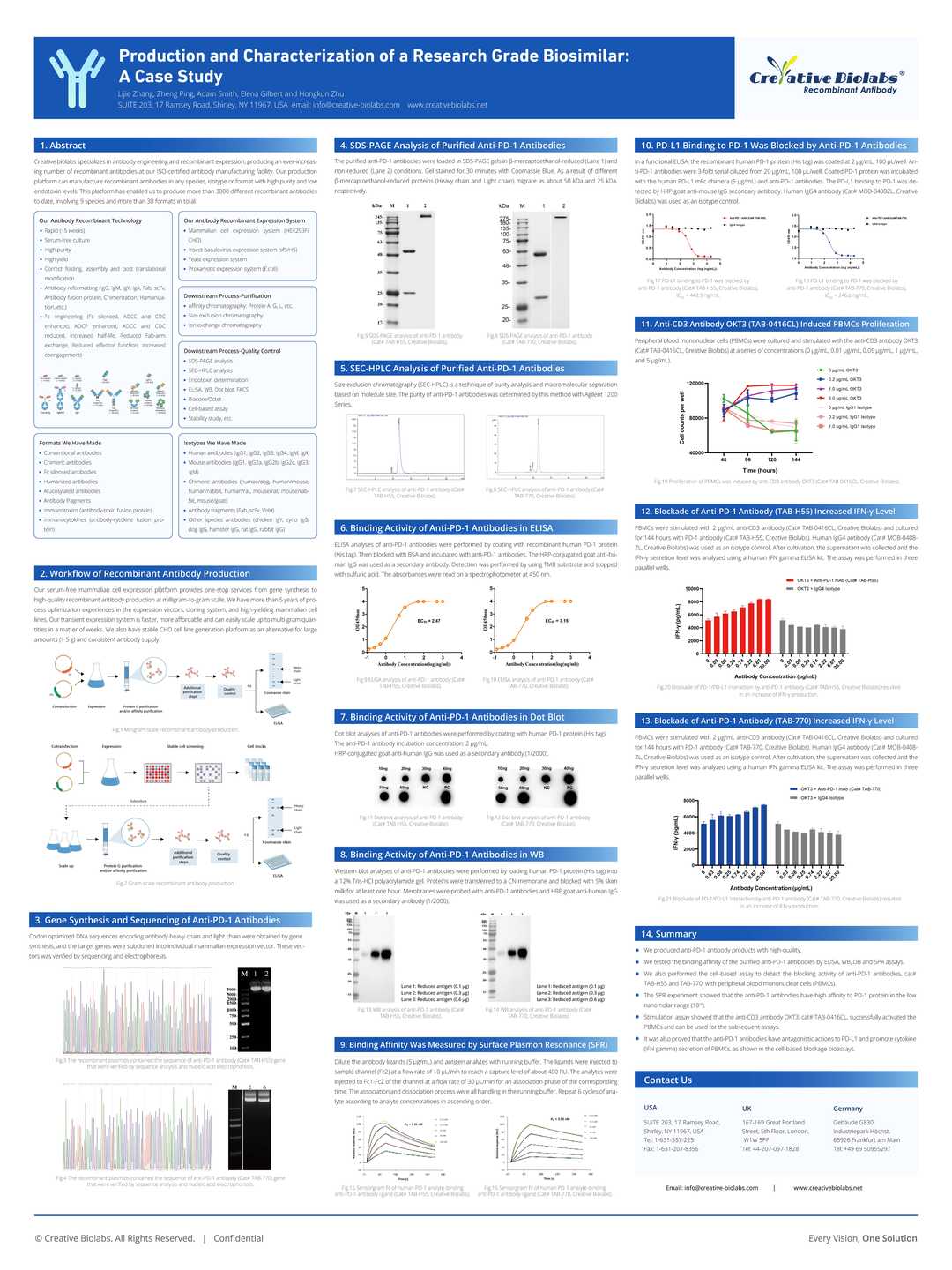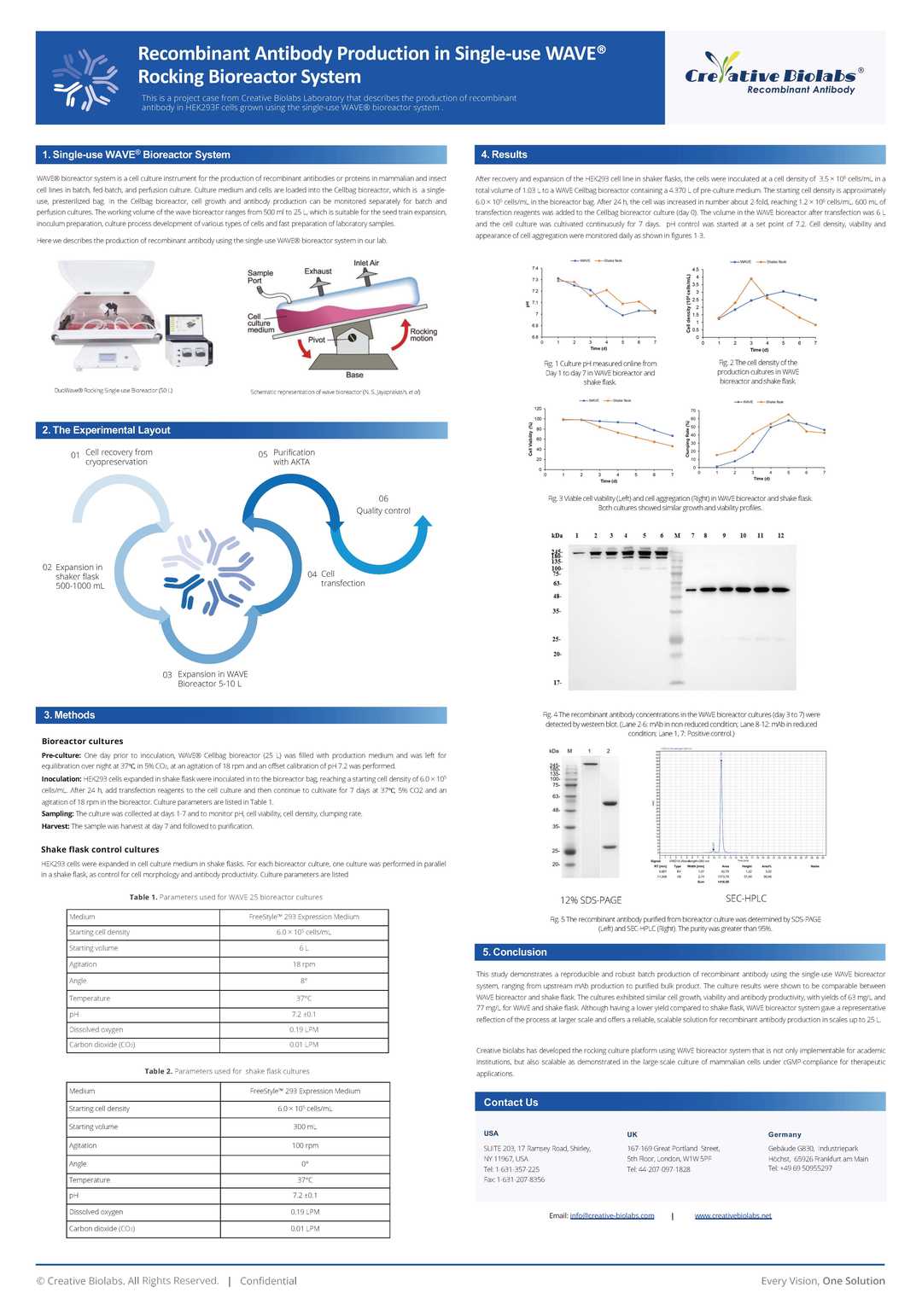Mouse Anti-HLA-A Recombinant Antibody (clone W6132)
CAT#: VS3-CJ359
This product is a mouse antibody that recognizes HLA-A/B/C.


Specifications
- Host Species
- Mouse
- Type
- Mouse IgG2a, κ
- Specificity
- Human HLA-A
- Species Reactivity
- Human
- Clone
- W6132
- Applications
- IF, FC
- Conjugate
- Unconjugated
Product Property
- Purification
- Affinity chromatography
- Purity
- >95% as determined by SDS-PAGE
- Format
- Liquid
- Buffer
- PBS
- Preservative
- 0.02% sodium azide
- Storage
- Store at -20°C for one year.
- Shipping
- Ice packs
Applications
- Application Notes
- This antibody has been tested for use in Immunofluorescence, Flow Cytometry.
Target
- Alternative Names
- HLAA
- Gene ID
- 3105
- UniProt ID
- P04439
- Sequence Similarities
- Belongs to the MHC class I family.
- Cellular Localization
- Cell membrane, Endoplasmic reticulum, Membrane, MHC I
- Post Translation Modifications
- (Microbial infection) Polyubiquitinated in a post ER compartment by interaction with human herpesvirus 8 MIR1 protein. This targets the protein for rapid degradation via the ubiquitin system.
N-linked glycosylation at Asn-110.
- Protein Refseq
- NP_001229687.1; NP_002107.3
- Function
- Antigen-presenting major histocompatibility complex class I (MHCI) molecule. In complex with B2M/beta 2 microglobulin displays primarily viral and tumor-derived peptides on antigen-presenting cells for recognition by alpha-beta T cell receptor (TCR) on HLA-A-restricted CD8-positive T cells, guiding antigen-specific T cell immune response to eliminate infected or transformed cells (PubMed:2456340, PubMed:2784196, PubMed:1402688, PubMed:7504010, PubMed:9862734, PubMed:10449296, PubMed:12138174, PubMed:12393434, PubMed:15893615, PubMed:17189421, PubMed:19543285, PubMed:21498667, PubMed:24192765, PubMed:7694806, PubMed:24395804, PubMed:28250417).
May also present self-peptides derived from the signal sequence of secreted or membrane proteins, although T cells specific for these peptides are usually inactivated to prevent autoreactivity (PubMed:25880248, PubMed:7506728, PubMed:7679507).
Both the peptide and the MHC molecule are recognized by TCR, the peptide is responsible for the fine specificity of antigen recognition and MHC residues account for the MHC restriction of T cells (PubMed:12796775, PubMed:18275829, PubMed:19542454, PubMed:28250417).
Typically presents intracellular peptide antigens of 8 to 13 amino acids that arise from cytosolic proteolysis via IFNG-induced immunoproteasome or via endopeptidase IDE/insulin-degrading enzyme (PubMed:17189421, PubMed:20364150, PubMed:17079320, PubMed:26929325, PubMed:27049119).
Can bind different peptides containing allele-specific binding motifs, which are mainly defined by anchor residues at position 2 and 9 (PubMed:7504010, PubMed:9862734).
Customer Review
There are currently no Customer reviews or questions for VS3-CJ359. Click the button above to contact us or submit your feedback about this product.
Submit Your Publication
Published with our product? Submit your paper and receive a 10% discount on your next order! Share your research to earn exclusive rewards.
Downloadable Resources
Download resources about recombinant antibody development and antibody engineering to boost your research.
Product Notes
This is a product of Creative Biolabs' Hi-Affi™ recombinant antibody portfolio, which has several benefits including:
• Increased sensitivity
• Confirmed specificity
• High repeatability
• Excellent batch-to-batch consistency
• Sustainable supply
• Animal-free production
See more details about Hi-Affi™ recombinant antibody benefits.
Datasheet
MSDS
COA
Certificate of Analysis LookupTo download a Certificate of Analysis, please enter a lot number in the search box below. Note: Certificate of Analysis not available for kit components.
Protocol & Troubleshooting
We have outlined the assay protocols, covering reagents, solutions, procedures, and troubleshooting tips for common issues in order to better assist clients in conducting experiments with our products. View the full list of Protocol & Troubleshooting.
Isotype Control
- CAT
- Product Name
Secondary Antibody
Recommended Dilution Buffer
- CAT
- Product Name
See other products for "HLA-A"
Select a product category from the dropdown menu below to view related products.
| CAT | Product Name | Application | Type |
|---|---|---|---|
| MOB-500-F(E) | Recombinant Anti-human HLA-A Antibody Fab Fragment | Neut, IF, FuncS | Fab |
| MHH-500-F(E) | Recombinant Human Anti-human HLA-A Antibody Fab Fragment | WB, IF, FuncS | Fab |
| PFBC-072 | Human Anti-HLA-A Recombinant Antibody (clone HYB3); Fab Fragment | WB, ELISA | Human Fab |
| HPAB-1096WJ-F(E) | Mouse Anti-HLA-A Recombinant Antibody; Fab Fragment (HPAB-1096WJ-F(E)) | ELISA | Mouse Fab |
| CAT | Product Name | Application | Type |
|---|---|---|---|
| MOB-500-S(P) | Recombinant Anti-human HLA-A Antibody scFv Fragment | ELISA, WB, IF, FuncS | scFv |
| MHH-500-S(P) | Recombinant Human Anti-human HLA-A Antibody scFv Fragment | ELISA, WB, FuncS | scFv |
| PSBC-072 | Human Anti-HLA-A Recombinant Antibody (clone HYB3); scFv Fragment | WB, ELISA | Human scFv |
| HPAB-1096WJ-S(P) | Mouse Anti-HLA-A Recombinant Antibody; scFv Fragment (HPAB-1096WJ-S(P)) | ELISA | Mouse scFv |
| CAT | Product Name | Application | Type |
|---|---|---|---|
| MHH-500 | Recombinant Human Anti-human HLA-A Antibody | ELISA, IP, FuncS | IgG |
| MOB-2307MZ | Recombinant Mouse Anti-Human HLA-A Antibody (clone 9.M.208), Biotin-Conjugated | FC, ICC, IF | Mouse antibody |
| HPAB-1096WJ | Mouse Anti-HLA-A Recombinant Antibody (HPAB-1096WJ) | ELISA | Mouse IgG1 |
| ZG-1014F | Mouse Anti-HLA-A Antibody (clone BRA-23/9) | FC, IHC-Fr | Mouse IgG2a |
| VS3-FY676 | Recombinant Rabbit Anti-HLA-A Antibody (clone R05-5H7) | WB, IHC-Fr, IHC-P, ICC, IF, IP | Rabbit IgG |
| CAT | Product Name | Application | Type |
|---|---|---|---|
| AGTO-L022F | anti-HLA-A immunotoxin Fib75 (IgG)-α-sar | Cytotoxicity assay, Functional assay |
| CAT | Product Name | Application | Type |
|---|---|---|---|
| PABX-105 | Recombinant Human Anti-HLA-A Antibody (T1) | WB, ELISA, FuncS | IgG |
| PABX-105-S (P) | Recombinant Human Anti-HLA-A Antibody scFv Fragment (T1) | WB, ELISA, FuncS | scFv |
| CAT | Product Name | Application | Type |
|---|---|---|---|
| MOR-1617 | Rabbit Anti-HLA-A Recombinant Antibody (clone DS1617AB) | FC, ICC, IF, IHC-Fr, IHC-P, IP, WB | Rabbit IgG |
| CAT | Product Name | Application | Type |
|---|---|---|---|
| VS-0424-XY124 | AbPlus™ Anti-HLA-A Magnetic Beads (HC10) | IP, Protein Purification |
| CAT | Product Name | Application | Type |
|---|---|---|---|
| VS-0225-XY119 | CytoStream™ Mouse Anti-HLA-A Recombinant Antibody (clone 1082C5) | FC | Mouse IgG1, kappa |
| CAT | Product Name | Application | Type |
|---|---|---|---|
| VS-0325-XY1028 | Anti-HLA-A Immunohistochemistry Kit | IHC | |
| VS-0525-XY3164 | Anti-Human HLA-A Immunohistochemistry Kit | IHC |
| CAT | Product Name | Application | Type |
|---|---|---|---|
| VS-0425-YC433 | Recombinant Anti-HLA-A Vesicular Antibody, EV Displayed (VS-0425-YC433) | ELISA, FC, Cell-uptake |
Popular Products

Application: Neut, ELISA, IF, IP, FuncS, FC, WB

Application: WB, ELISA, FuncS

Application: ELISA

Application: WB, ELISA, IF

Application: WB, IHC, ELISA, FC

Application: WB, ELISA, FuncS, Inhib, PK, IP, SPR

Application: ELISA, IHC, FC, IP, IF, Inhib

Application: IF, IP, Neut, FuncS, ELISA, FC

Application: ELISA, WB
For research use only. Not intended for any clinical use. No products from Creative Biolabs may be resold, modified for resale or used to manufacture commercial products without prior written approval from Creative Biolabs.
This site is protected by reCAPTCHA and the Google Privacy Policy and Terms of Service apply.




















